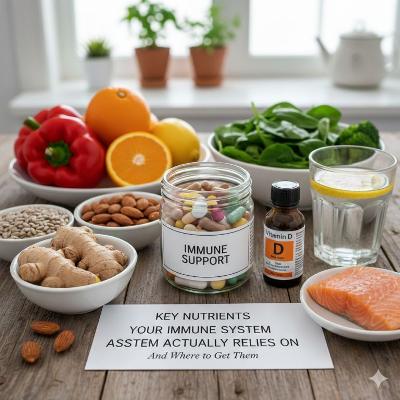Ovarian cancer does not get much attention. Many people are unsure what it is, what the signs are, or when to see a doctor. That quiet makes a real difference, because this cancer is often found late. When it is found early, treatments work better. That is why September turns teal. The month is about learning simple facts, sharing them in everyday places, and giving steady support to women and families.
What this month sets out to do
Awareness starts with clear, calm messages. It puts the basics in front of everyone, then repeats them until they stick. Schools, clubs, and sports teams join in. So do families and friends. Many people use Ovarian Cancer Awareness Month as a simple way to keep the focus on symptoms, early checks, and support, all without pressure or sales talk. When the same ideas show up in lots of places, they become part of normal life.
What ovarian cancer is, in simple terms
Ovarian cancer starts in the ovaries. These are two small organs in the lower belly that make hormones and release eggs. The tricky part is that early signs can seem normal. Many expect cancer to shout. This one often whispers. That is why people miss it at first.
Signs you should not ignore
There are a few patterns worth attention. Bloating that does not settle. Pain in the lower belly or pelvis that keeps coming back. Feeling full very quickly, even with small meals. Needing to pee more often, or more urgently. Changes in bowel habits that do not fade. One rough day happens to everyone. A pattern most days for a few weeks is different. That is the time to book a GP visit.
Keeping short notes helps a lot. Type dates and details into a phone. Write when the symptom shows up, how strong it feels, and what changed. Bringing those notes to the clinic makes the talk clearer. It saves time and helps the doctor choose next steps, such as a pelvic exam, an ultrasound, or a blood test that guides care.
Why early checks are not always easy
There is no routine screening test for everyone. That surprises many people. A Pap test checks the cervix, not the ovaries. So the first step is not a lab sheet, it is attention. Notice a pattern, write it down, and speak up. Simple words help: “These symptoms have been here most days for a month.” That line tells the story fast and gets the right tests going.
How the month turns talk into action
Awareness works best when it feels normal. A quick chat after practice. A few minutes in health class. A calm reminder at dinner. Tell someone the signs. If a friend mentions bloating that never seems to end, or new pelvic pain that keeps showing up, suggest a GP check. Ask about family history when it feels right, since that can change risk for some people. These talks do not have to be heavy. They can be short and kind, the sort of words people remember when they need them.
Communities use small steps that add up. A teal notice board at school. A morning assembly with the key signs. A team warmup in teal shirts. None of this needs fancy language. Clear points said with care work best.
Support that actually helps
Support should lower stress. Keep it steady and simple. Offer a ride and arrive on time. Drop off a meal that reheats well. Send a short message on treatment days. Some days a person wants to talk, other days rest comes first. Respect both. Promise only what can be done, then follow through. That kind of care saves energy for the hard parts.
Clearing up common myths
Myths slow people down. Here are a few that need to go. A Pap test does not screen for ovarian cancer. Only older women get it is not true. Risk rises with age, but younger women can get ovarian cancer too. Period bloating can be normal. Bloating most days for weeks is not. When facts are easy to find and easy to say, people act sooner.
The role of rare types
Some forms need extra focus. One is low-grade serous ovarian cancer, often called LGSOC. It tends to affect younger women more than other types. It grows slowly, which sounds less scary, but it often does not respond well to standard chemo. Care plans may lean on surgery and hormone treatment, and doctors are testing drugs that target how these cells grow. Because it is rare, it can be missed or misunderstood. Awareness month keeps it in view so patients feel seen and research keeps moving.
Helping younger kids understand
Younger kids do not need every detail. Keep it gentle. Say the ovaries are small parts in the body, and grown-ups watch for signs that do not go away. Explain that teal ribbons help people remember to learn and to care for each other. Kids understand the idea of paying attention and telling a trusted adult when something feels wrong. That is enough.
How awareness helps in clinics too
Doctors and nurses see a lot of symptoms every day. Some are simple, some are not. Awareness month is a reminder for clinics as well. It raises rare forms on the radar, and it stresses that patterns matter more than a single rough day. When patients arrive with clear notes, and staff are tuned in to the signs, the path to answers is faster. That teamwork improves care.
What this month leaves behind
The teal color fades when September ends, but the habits can stay. Keep a short list of signs in a notes app. Bring them up once in a while at home, in class, or on a team. Practice clear words for GP visits. Offer steady help to anyone going through treatment, not just on big days, but on slow days too. Small steps, done often, change how people react to symptoms. That is the real goal.
Key points to carry with you
Ovarian cancer can be hard to spot early, which is why this month matters. Learn the signs and notice patterns that do not fade. Speak up when something feels off. Share what you know in a calm way. Be steady support for those in care. When more people do these simple things, more women get help sooner, and more families feel less alone.






